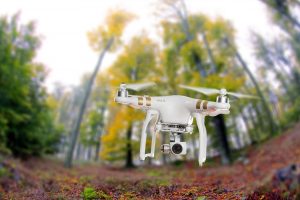As highlighted in Doc 10019 (ICAO, 2015), Remotely Piloted Aircraft Systems (RPAS) are a new component of the aviation system that all stakeholders, including the International Civil Aviation Organization (ICAO), States and the industry are working to understand, define and ultimately integrate. These systems are based on cutting-edge developments in aerospace technologies, offering advancements which may open new and improved civil/commercial applications as well as improvements to the safety and efficiency of all civil aviation.
The safe integration of RPAS into non-segregated airspace is a long-term activity with many stakeholders adding their expertise on such diverse topics as licensing and medical qualification of remote pilots, technologies for detect and avoid systems, frequency spectrum, separation standards from other aircraft and development of a robust regulatory framework.

|
What falls under RPAS?
According to the Remotely Piloted Aircraft Systems Panel (RPASP), the following areas of expertise are an integral part of the RPAS domain (ICAO, 2020):
- airworthiness: including the design, production, manufacture, certification, continuing airworthiness, command and control (C2) or RPAS;
- RPAS operations: including the certification, oversight, human performance aspects, RPAS operators, safety management of RPAS;
- Personnel licensing: covers the area of pilot and air traffic controller licensing and medical requirements;
- Telecommunications for C2 and air traffic control;
- Detect and avoid (DAA), surveillance systems including airborne collision avoidance systems (ACAS), ground proximity warning systems (GPWS) and other safety nets; and
- Air Traffic Management (ATM) pertinent to RPAS.
For more information, visit one of the following WIKIFATCA pages: |
Remotely Piloted Aircraft Systems (RPAS) 20
- A Further Study into Interactions Between Remotely Piloted Aircraft Systems and ATC
- AAS 1.10 OPERATIONAL USE OF UNMANNED AIRCRAFT (UA)
- AAS 1.21 UNMANNED AIRCRAFT SYSTEM (UAS) TRAFFIC MANAGEMENT (UTM)
- AAS 1.22 RPAS ASSUMPTIONS
- ATM and the Handling of RPAS
- Display of Unmanned Aerial System (UAS) Surveillance Data on Controller Working Position
- Dynamic Reconfiguration of the U-Space Airspace (DAR)
- General Considerations on the Implact of U-Space Dynamic Airspace Reconfiguration on ATS Units
- High Altitude Operations (HAO)
- IFATCA RPAS / Unmanned Aircraft Team
- Interactions Between Unmanned Aircraft Systems and Air Traffic Control
- Interactions Between Unmanned Aircraft Systems Operators and Air Traffic Control
- Investigate Operational use of Unmanned Aerial Vehicles
- Low Level RPAS
- Remotely Piloted Aircraft System – IFATCA Assumptions
- RPAS Licensing
- Study UAS (Unmanned Aircraft System)
- UAS – Study ‘Sense and Avoid’ as a Replacement of ‘See and Avoid’
- UAS Flight Rules
- UTM (Unmanned Aircraft System (UAS) Traffic Management)


